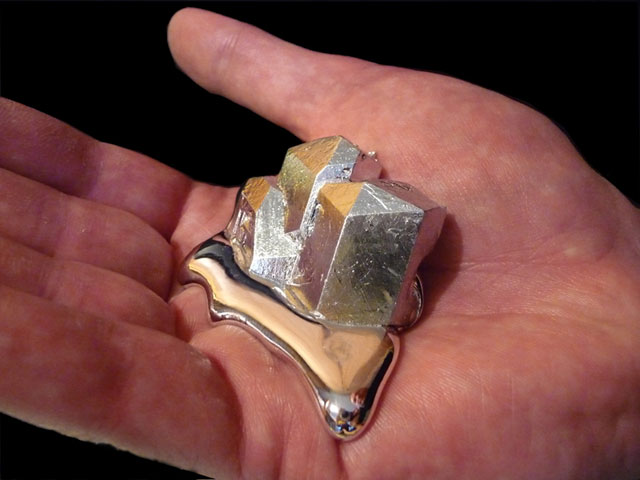Home > Sections > Elements & the Periodic Table > Properties of Metals
Last Updated: 14th June 2023
ARCHIVED ITEM: this page is no longer updated.
Properties of Metals
Keywords
Metal, melting points, conductor, heat, electricity, density, malleable, ductile, boiling points, liquid, superheated, Gallium.
Introduction
The majority of elements in the periodic table are metals. They are all placed on the left side of the table, and have similar properties. This means they have a similar structure, and they are bonded together in a similar fashion.
Properties of a Metal
Physical properties of a metal include:
- a high melting point
- good conductor of electricity
- good conductor of heat
- high density
- malleable (easy to place into shape)
- ductile (can be formed into wires or sheet metal without breaking)
Few elements in the periodic table that are metals have different properties. They include:
Mercury: it has a low melting point, and exists as a liquid at room temperature.
Group 1 elements: these also have low melting points, as well as low densities. An example of this is sodium, which has a lower density than water, and floats on top (not to be confused with salt, which is sodium chloride).
Low density metals have a smaller mass than other metals. When a metal has a high density, it means that the mass is greater due to its size.
An example of this is a typical drinks can. Your regular drinks can that you buy in the supermarket has a volume of 330cm cubed. If it was then filled with sodium, that can's mass would then be 320g. However, if it was filled with lead with the same volume, it would weigh around 3.75kg.
Interesting fact: you can hold a piece of Gallium in your hand and it will physically melt before your eyes.
Melting and Boiling Points
All metals have a different melting and boiling point. To make a metal change to a liquid, they have to be heated, which uses energy to transfer into it. As they are usually good conductors of heat, this process is fairly simple.
However, if you take iron for an example, it would need to be superheated to over 2800C in order for it to change to a liquid. Whereas magnesium only needs to be heated to 650C in order to become a liquid.
Malleability and Ductility
Because of the makeup of metals are sometimes layered, it means that these layers can be manipulated easily to form a sheet metal. It also means they can be shaped without shattering, which is handy for wires and other thin materials.
Conduction
Nearly all metals can conduct electricity. When you place a voltage onto a metal, the electrons travel through the lattice structures, which form an electric current. Common superconductors of electricity include:
- Iron
- Copper
- Gold
Here is a YouTube video from Cognito explaining the properties of metals:




 States of Matter
States of Matter
